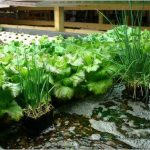Imagine a world where your food is grown with care for the planet, where technology and nature work together harmoniously. Sounds like a dream, right?
But what if this dream could become your reality? Welcome to the intriguing world of sustainable smart farming. You might wonder, is it truly possible to farm in a way that nurtures the Earth while feeding a growing population? This article will take you on a journey through innovative farming techniques that promise to revolutionize the way you think about food production.
By the end, you’ll discover the potential of merging sustainability with cutting-edge technology. Ready to explore a future where every bite you take supports a healthier planet? Let’s dive in!
Innovative Farming Technologies
Sustainable smart farming integrates technology for efficient resource use, promoting environmental health. Innovations like drone monitoring and precision irrigation enhance productivity. These advancements aim to balance agricultural needs with ecological preservation, paving the way for future sustainable practices.
Innovative farming technologies are transforming the way we grow food. They’re not just gadgets; they’re tools that can make farming more sustainable and efficient. The question is: how can these technologies help us feed the world without harming the planet?Precision Agriculture
Precision agriculture uses GPS and sensors to monitor fields. This means you can apply water, fertilizers, and pesticides exactly where they’re needed. It saves resources and reduces waste. Imagine being able to water only the dry patches of your field while leaving the rest untouched—this is the power of precision.Vertical Farming
Vertical farming allows you to grow crops in stacked layers, often indoors. This method uses less land and can be done in urban areas. You might have seen or even tasted produce grown in vertical farms without knowing it. These farms often use LED lighting and hydroponics to maximize growth.Drones In Agriculture
Drones can survey large areas quickly. They can check for issues like pests or water stress in crops. With a drone, you can scout hundreds of acres in minutes, gathering data that would take days to collect on foot. It’s like having a bird’s-eye view of your farm.Automated Machinery
Automated machinery can plant, water, and harvest crops with minimal human intervention. This reduces labor costs and allows for more precise farming practices. Picture a tractor that can till your fields all night long while you sleep—this isn’t the future; it’s now.Smart Sensors And Iot
Smart sensors can track soil conditions, weather patterns, and crop health. They send this data to your smartphone, helping you make informed decisions. Wouldn’t it be great to get a notification when your crops need watering, just like you get a reminder to drink water? These technologies not only save time and resources but also open up new possibilities. They challenge us to think about what farming can be. Are you ready to embrace these innovations for a more sustainable future in agriculture?
Environmental Impact And Benefits
Sustainable smart farming blends technology with eco-friendly practices, minimizing environmental harm while boosting crop yields. This approach supports biodiversity and conserves resources, making agriculture more resilient. Exploring these methods can lead to healthier ecosystems and more efficient food production.
Sustainable smart farming is more than just a buzzword. It’s a practical approach to agriculture that balances productivity with environmental care. As you dive into the world of sustainable smart farming, you may wonder about its environmental impact and benefits. It’s essential to understand how this modern farming technique can lead to a healthier planet.Environmental Impact
Sustainable smart farming minimizes harmful practices. By using precision farming techniques, you can reduce the use of pesticides and fertilizers. This leads to less soil and water contamination. Smart farming technology promotes efficient water use. Sensors can help you measure soil moisture levels accurately. This means you only add water when necessary, reducing wastage and conserving this precious resource. Adopting smart farming can also decrease greenhouse gas emissions. Autonomous tractors and drones powered by renewable energy contribute less pollution. You’re helping reduce your carbon footprint while maintaining farm productivity.Benefits To Biodiversity
Sustainable smart farming supports biodiversity. Crop rotation and polyculture strategies encourage a variety of species to thrive. You create a balanced ecosystem on your farm, promoting healthier soil and pest control. Using technology to monitor pest populations means you can avoid blanket pesticide application. This selective approach protects beneficial insects and pollinators, vital for your crops’ success. Biodiversity also leads to more resilient crops. Diverse planting can withstand diseases and climate changes better. You’re investing in the long-term health of your farm by embracing variety.Economic Benefits
Smart farming can lead to cost savings. By optimizing resource use, you reduce waste and lower expenses. Precision technology ensures you only add what’s necessary, cutting down on excessive spending. Increased productivity is another advantage. With smart farming, you can track growth patterns and make informed decisions. This means higher yields and potentially more profit for you. The data-driven approach of smart farming also opens new market opportunities. Consumers are increasingly interested in sustainable products. By showcasing your environmentally friendly practices, you can attract a new customer base.Is It Worth The Investment?
You might be pondering if the shift to sustainable smart farming is worth it. Consider the long-term benefits for your farm and the planet. While initial costs might be high, the savings and environmental advantages are significant. Think about the legacy you’re leaving. Sustainable practices ensure future generations can continue farming. You’re not just securing your farm’s future but contributing to global sustainability. Are you ready to embrace these changes for the betterment of your farm and the environment?Economic Viability Of Smart Farming
Smart farming combines technology with agriculture. It aims to boost efficiency. Farmers use data and machines to improve yield. But is it economically viable? This question is crucial. The financial aspect can influence a farmer’s choice. Let’s explore the economic factors of smart farming.
Cost Of Smart Farming Technology
Smart farming tools can be costly. Devices like drones, sensors, and IoT systems require investment. Not every farmer can afford these. Initial costs can be high. Many farmers hesitate because of this. But some technologies promise long-term savings. Choosing the right tool is vital.
Return On Investment
Investment returns depend on farm size and crop type. Some farms see quick benefits. Others may take longer. Smart farming aims to increase productivity. More yield means more profit. Careful planning ensures better returns. Farmers should evaluate their specific needs.
Government Support And Subsidies
Many governments support smart farming. Subsidies help reduce costs. These funds make technology accessible. Farmers can seek guidance from local bodies. Support can vary by region. Checking available programs is wise.
Market Demand And Price Fluctuations
Market demand affects profits. High demand can lead to better prices. Smart farming can help meet these demands. Price fluctuations can be risky. Farmers need to stay informed. Understanding market trends is crucial.
Long-term Benefits
Smart farming has long-term benefits. Better resource use saves money. Efficient practices protect the environment. Healthy soil leads to sustainable farming. Over time, these benefits outweigh initial costs. Planning for the future is key.

Challenges And Future Prospects
Sustainable smart farming faces challenges like high costs and technology access. Yet, future prospects offer hope. Innovations in AI and IoT can enhance efficiency and resource use, making it feasible.
Sustainable smart farming is an exciting yet challenging frontier. As technology and sustainability become inseparable, farmers face hurdles that can’t be ignored. But with every challenge comes a potential path forward, promising a future where agriculture is more resilient and eco-friendly.Challenges Of Sustainable Smart Farming
One of the biggest challenges is the high initial cost of implementing smart technologies. Small-scale farmers often struggle to afford advanced tools like drones, sensors, and data analysis software. You might wonder if the investment pays off in the long run. Another issue is the lack of technical knowledge. Many farmers are experts in traditional methods but find it daunting to adopt new tech. Training and ongoing support are essential to bridge this gap. There’s also the issue of data security. As farms rely more on digital tools, the risk of data breaches grows. Farmers need to be proactive about safeguarding their information.Future Prospects Of Sustainable Smart Farming
Despite these challenges, the future of smart farming looks promising. As technology advances, costs are expected to decrease, making it accessible to more farmers. Imagine a world where even the smallest farms use drones to monitor crop health. Education will play a crucial role in the adoption of smart farming. More institutions are now offering courses focused on agriculture technology, preparing the next generation of farmers. Additionally, the focus on sustainability is encouraging. Farmers are increasingly aware of their environmental impact and are eager to adopt practices that benefit the planet. Are you ready to support a movement that prioritizes both productivity and the environment? Governments and organizations are also stepping in to support this transition. Subsidies and grants can alleviate financial burdens, making it easier for farmers to adopt new technologies. Consider how these initiatives can transform the agricultural landscape. By addressing these challenges and embracing the prospects, sustainable smart farming can become a reality. What steps will you take to be part of this agricultural revolution?
Conclusion
Sustainable smart farming is possible with innovation and dedication. Technology reduces waste and increases efficiency. Farmers can grow healthy crops while preserving nature. Smart tools help manage resources wisely. Communities benefit from better food and environmental care. Challenges remain, but solutions exist with effort and learning.
The future of farming depends on smart practices. Sustainable methods ensure long-term growth and health. Embrace change for a better farming future. Together, progress can be made for a greener planet. Sustainable smart farming is not just a dream; it’s an achievable reality.



